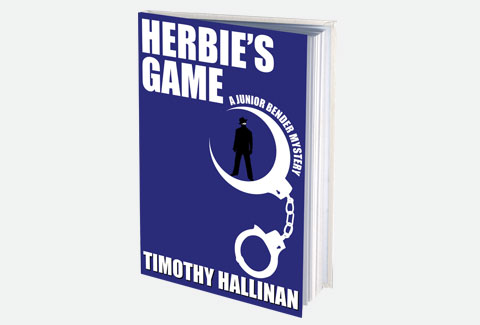
Act One
“Never open a book with weather.” —Elmore Leonard
Well, okay, it’s not quite as cut-and-dried as that. Leonard goes on to say you can get away with opening with weather if you’re really good at it, or if you’re actually focusing on a character’s reaction to the weather. If you absolutely must talk about the weather, he says, keep it short. And for good reason.
Your first scene is enormously important. It invites the reader into the world of the characters and the world of the book. Ideally, it should set into motion something that will be important later. It should almost certainly introduce us to a main character, if not actually the primary character.
And it should make us eager to read (and you eager to write) the second scene.
When you think about it, you realize that you can actually begin a story anywhere. Listen to what a wonderful writer, Margaret Visser, says in a dazzling book, The Geometry of Love: Space, Time, Mystery and Meaning in an Ordinary Church:
Often the “line” of connection in stories is pictured as a thread. (The word “line” itself comes from the Latin linea, a flaxen thread for making linen.) We speak of “spinning a yarn” and, if we become distracted, of “losing the thread” of the tale . . . . The word “text” has the same root as “textile” because a narrative is thought of as woven, out of threads.
And like a textile, like a piece of cloth, a story can be cut and assembled–or “woven,” to use her word–in an almost infinite number of ways.
So where will you begin to weave your story?
For your opening scene, I’d suggest you consider the following:
• Give us something to look at. Let the reader use his or her imagination to see something that captures attention.
• Get it moving. There’s no reason a book’s momentum shouldn’t begin on the first page, or even in the first paragraph or the first sentence. Let the reader ride that momentum right into the story.
• Populate it. Get your characters on the page as soon as possible. Of course, there are always exceptions. James Michener started Hawaii with God only knows how many pages describing the geological events that created the chain of islands where his novel was set. Fissures opened in the seabed. Magma bubbled up and formed undersea volcanic mountains in microscopic increments. For thousands of years. Rain fell. Rain didn’t fall. The mountains grew from their own eruptions. Surface rocks slowly, and I mean slowly, fragmented to become sand. You get the point. And my description isn’t fair, because it worked. But he was James Michener, with dozens of novels and stories, literally millions of words, behind him. He had learned his craft to an extent that most of us only dream about. And, Elmore Leonard notwithstanding, there was a bunch of weather in there, too.
• Pick the right moment. Remember, you don’t have to start at the beginning. It’s your story–you can open it up anywhere you want. You can jump ahead to a point at which the action is beginning to rise and then, when the scene’s done, back it up to an earlier point. Or you can find a moment at the very beginning when things begin to develop–perhaps a moment at which a character’s world begins to change, whether he or she knows it or not.
• Establish the stakes. Whatever is at issue in the novel–or at least one of the things that’s at issue, if there are several–should be introduced in the first scene. Lots of other writers would argue with this, and have, on a face-to-face basis, but I take the point of view that the reader doesn’t have a decade to dedicate to your book. You owe the reader your best attempt to do several things at once, whenever possible: to move the story forward, deepen the characters, and focus on the stakes. You might as well begin with the first scene.
My Bangkok novel, A Nail Through the Heart, opens with two crooks digging up a safe outside a mysteriously run-down Bangkok beside the Chao Phraya river. One of these two men will later become an important character, and the theft of the safe’s contents sets into motion one of the primary threads in the fabric of the story. Another one of my book’s, The Million Dollar Minute, begins with a woman in line at a bank to make a substantial withdrawal from an extremely nervous teller who keeps looking past her to see if he’s being observed through the window that opens onto the street. Both the woman and the teller will figure in the story, with different degrees of prominence. The money itself becomes a key element in the stakes.
Missing from the first scene of both these books is the series’ main character, a Bangkok-based rough-travel writer named Poke Rafferty. But he’s only one chapter away from his first appearance, and in both instances he’s doing something that (I hope) is interesting. And in both books, the events of the two first chapters will give rise to the stakes that eventually threaten practically everything he lives for.
I could have chosen to begin either of these books at a dozen other places, but I chose these scenes after answering a series of questions about three or four possible starting points.
It might be interesting for you to go through the same exercise. This is pretty much what I did:
First, as I said, I chose several possible openings. Then I answered in writing, these questions:
1. What’s the first thing the reader sees or hears?
2. Who are the first people the reader meets?
3. Where are we physically? Is it an interesting place?
4. How does the scene set up the story?
5. How does it advance the story?
6. What do we learn about the characters?
7. Is the scene interesting in itself – is it strong enough to bring the reader into the book?
8. Does it lead to an interesting second scene?
And one more thing–if your main character isn’t introduced in an interesting fashion in the first chapter, make sure he or she is doing something interesting when he or she finally does claim space on the page.
* * *
Ed. note: This is the sixteenth post in a series. Check out the Table of Contents to see what’s in store, and be sure to come back next week for a new installment.
Information about Timothy Hallinan’s next book in The Junior Bender series, HERBIE’S GAME, is here.
